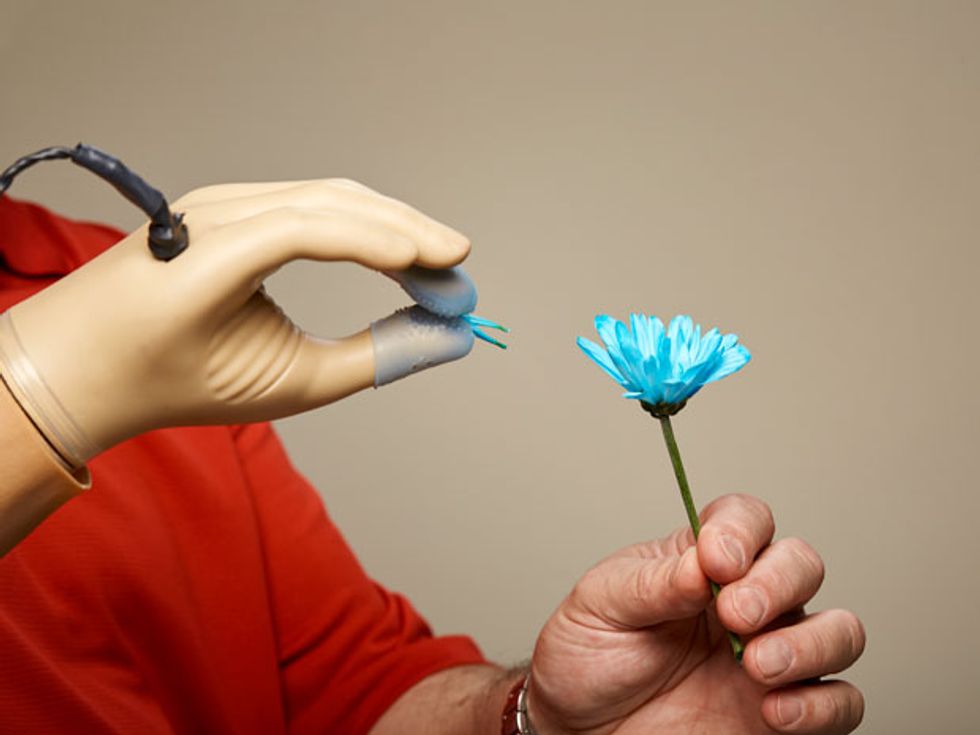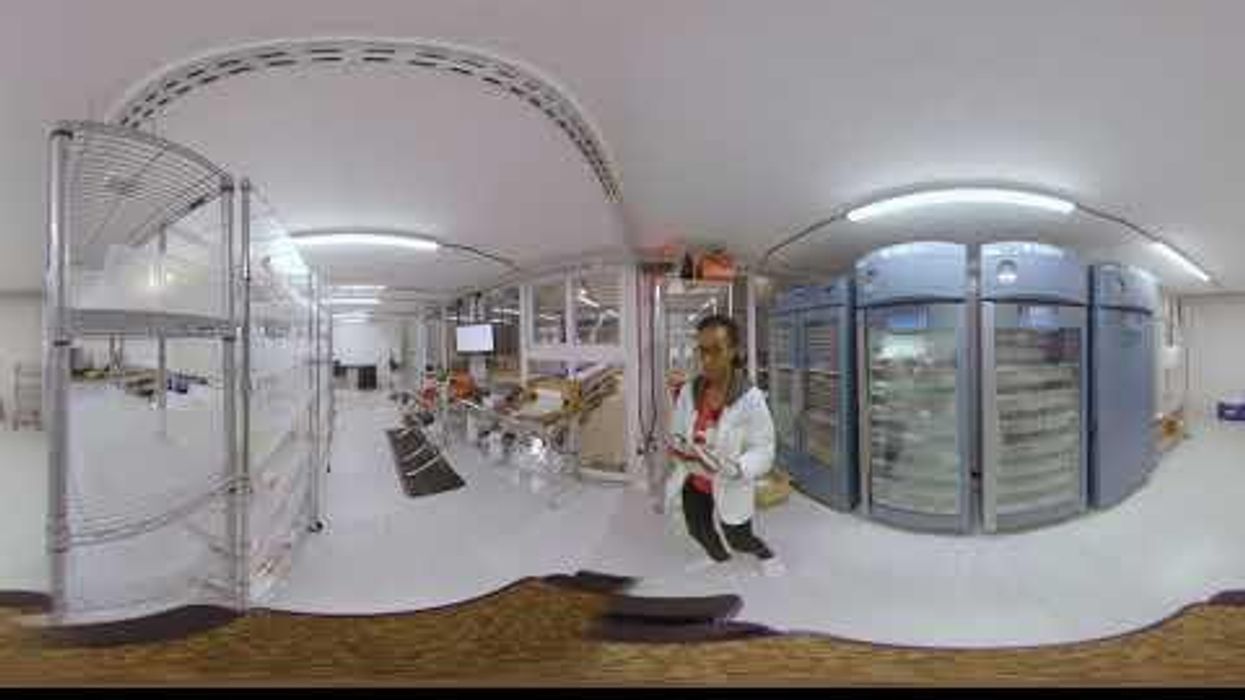Igor Spetic lost his right hand in an industrial accident. Then he started working with Dustin J. Tyler, a researcher in human-machine interaction, to help develop an experimental haptic prosthetic that lets Spetic feel sensations in his missing hand.
To make the prosthetic work, Tyler tapped into Spetic’s nervous system. Implanted electrodes in the right forearm make contact with three nerves at 20 locations. Stimulating different nerve fibers produces realistic sensations: When one spot is stimulated, he feels a touch on his right palm; another spot produces sensation in his thumb. Thin-film force sensors in the device’s index and middle fingers and it’s thumb can trigger the corresponding nerve stimulation.
Right now, the haptic system is rudimentary and can be used only in the lab, but the researchers hope that, eventually, they’ll be able to engineer a prosthesis that is just as capable as the hand that was lost.
Read More:Creating a Prosthetic Hand That Can Feel
Video Footage: Mike McGregor



